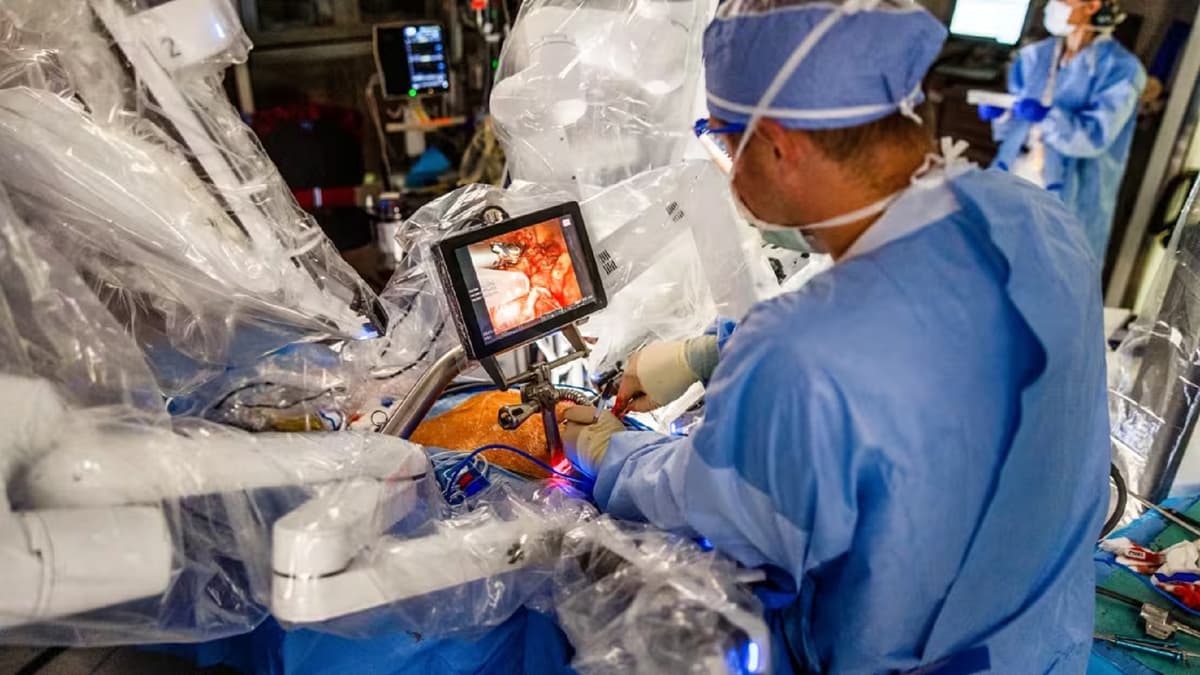Heart surgery just went from brutal to barely noticeable.
In a world-first operation that borders on science fiction, surgeons at the Cleveland Clinic have replaced a failing heart valve through a tiny incision in the neck—no cracked chest, no rib spreaders, no weeks-long recovery. Just four precision-guided robotic arms, a hidden scar along a neck crease, and a surgical team that rewrote the rulebook on aortic valve replacement.
Dr. Marijan Koprivanac, the mastermind behind the procedure, didn’t just avoid the sternum—he eliminated it from the equation entirely. Traditional aortic valve replacement (AVR) means opening the chest wide, a brutal process that carries pain, risk, and lengthy rehab. Even the “minimally invasive” versions still involve partial sternotomies or rib incisions. But not this.
This time, the surgeons went in through the front of the neck.
Using robotic tools designed for supreme finesse, the team navigated through a narrow corridor in the cervical area to reach the heart. With no camera poking through the ribs, no spreading of the chest cavity, and no breaking bones, they debrided diseased tissue and implanted a brand-new valve with millimeter precision.
And the results? Nothing short of game-changing.
Four patients underwent the robotic transcervical AVR earlier this year. They were up and moving within hours. One was back to farming in three weeks. Another hit the gym just seven days post-op. Pain management? Just Tylenol and ibuprofen.
This isn’t just a smaller scar. It’s a surgical jailbreak.
Dr. Koprivanac first tested the technique on cadavers, refining it with custom-built retractors and tools until the real-world application became undeniable. Now, after showing that the robotic neck route works safely, the team is laser-focused on cutting surgical times and expanding access. Their next milestone? Getting patients out of the hospital in two days flat.
The implications are huge. No more broken chests for isolated valve procedures. No more grueling recoveries for older patients. And no more trade-offs between surgical precision and patient comfort.
With robotic vision, custom access ports, and a neck incision you can hide with a shirt collar, this technique could become the new gold standard in cardiac surgery.
Welcome to the future of heart repair: no bloodied chests, no heavy scars—just quiet precision through a doorway no one saw coming.


